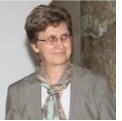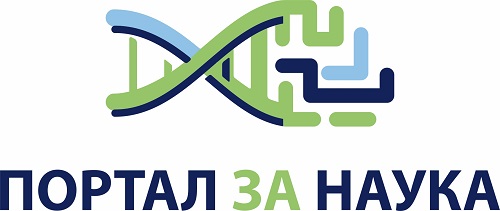Prof. Dr. Radostina Stoyanova
Prof. Dr. Radostina Stoyanova was born on 12 January 1962. She completed her secondary education in 1980 at National High School of Mathematics and Natural Sciences Academician Lyubomir Chakalov where she intensively studied chemistry. Prof. Dr. Stoyanova completed in 1985 Sofia University St. Kliment Ohridski, Faculty of Chemistry and Pharmacy, and obtained master’s degree in Inorganic Chemistry. In 1987, she took up employment in the Institute of General and Inorganic Chemistry as a chemist. Here, in 1992 she completed her doctoral thesis in CO2-anion radicals in strontium carbonate – conditions for stabilisation and electronic structure and was awarded educational and scientific degree Doctor. In the institute Prof. Dr. Stoyanova developed her career – she started to work as chief assistant, then became an associate professor and professor (2012), and in 2020 she was elected as Director of the Institute.
The scientific area of training of Prof. Stoyanova falls in professional field 4.2 – Chemical Sciences – which focuses on solid state chemistry. Her research work focuses on the methodological development of spectroscopic methods (electron paramagnetic resonance (EPR)) of analysis of substances in solid form, study of the local structure of intercalation compounds and its influence on their electrochemical properties, and development of new classes of electrode materials for lithium and sodium ion batteries. Prof. Stoyanova is research supervisor of seven doctoral students, five of whom have successfully completed their thesis, and participates in the training of four young scientists from University of Cordoba (Spain) in the application of EPR spectroscopy for analysis of electrode materials.
 Prof. Stoyanova is the leader and coordinator of a total of 8 projects with national and European funding and participates in over 20 projects with external funding. The results of these studies have been published in 164 scientific papers (all in impact journals), and more than 3,400 independent citations have been noted so far. The total H-index of Prof. Stoyanova scientific production is 33 (WoS database). In 2018, prof. Stoyanova was awarded Pythagoras Award for acknowledged scientist in the area of natural and engineering sciences. In 2019, she obtained funding under National Science Programme Excellence Innovation and People for Development of European Science for its project Synergism between cationic and anionic redox reactions in materials with colossal intercalation capacity (CARiM).
Prof. Stoyanova is the leader and coordinator of a total of 8 projects with national and European funding and participates in over 20 projects with external funding. The results of these studies have been published in 164 scientific papers (all in impact journals), and more than 3,400 independent citations have been noted so far. The total H-index of Prof. Stoyanova scientific production is 33 (WoS database). In 2018, prof. Stoyanova was awarded Pythagoras Award for acknowledged scientist in the area of natural and engineering sciences. In 2019, she obtained funding under National Science Programme Excellence Innovation and People for Development of European Science for its project Synergism between cationic and anionic redox reactions in materials with colossal intercalation capacity (CARiM).
CARiM aims to introduce an entirely new concept for achieving colossal intercalation capacity in layered sodium transition metal oxides (NaxTMO2) and MOF through synergy of cationic and anionic redox reactions. The joint redox reaction leads to change in the accepted paradigm for limited intercalation capacity of the materials – the charges of intercalated ions are compensated by changing the oxidation state of transient metal ions of the host material and by activating the anionic redox reaction. This concept will be demonstrated by developing experimental and theoretical approaches to surface and structural engineering of layered oxides and metal-organic structures. The research plan is divided into four work packages, each of them dedicated to one of the specific project objectives. The joint cationic and anionic redox reactions in Li + / Na + intercalation will be initiated by targeted replacement of transient metal ions with intercalation inactive ions (Mg2 +, Ti4 + and Ge4 +), followed by creation of metal vacancies in the layers. In order to suppress the lateral surface reactivity of anions, a method of deposition of materials, accumulating oxygen on the surface of layered oxides will be developed. Massive intercalation of alkaline ions will be implemented in both oxides and metal-organic structures. New metal-organic structures will be predicted by periodic calculations with DFT. They will also be tested experimentally. The efficient combination of ex-situ and in-situ diffraction and spectroscopic methods will allow understanding the mechanism of intercalation reaction; this is the mechanism needed to understand the redox properties of materials. The most risky part of the project is the development of new principles of materials with colossal intercalation capacity. The research capacity of the institute and interdisciplinary research team is able to achieve these ambitious objectives.

 Previous Post
Previous Post Next Post
Next Post